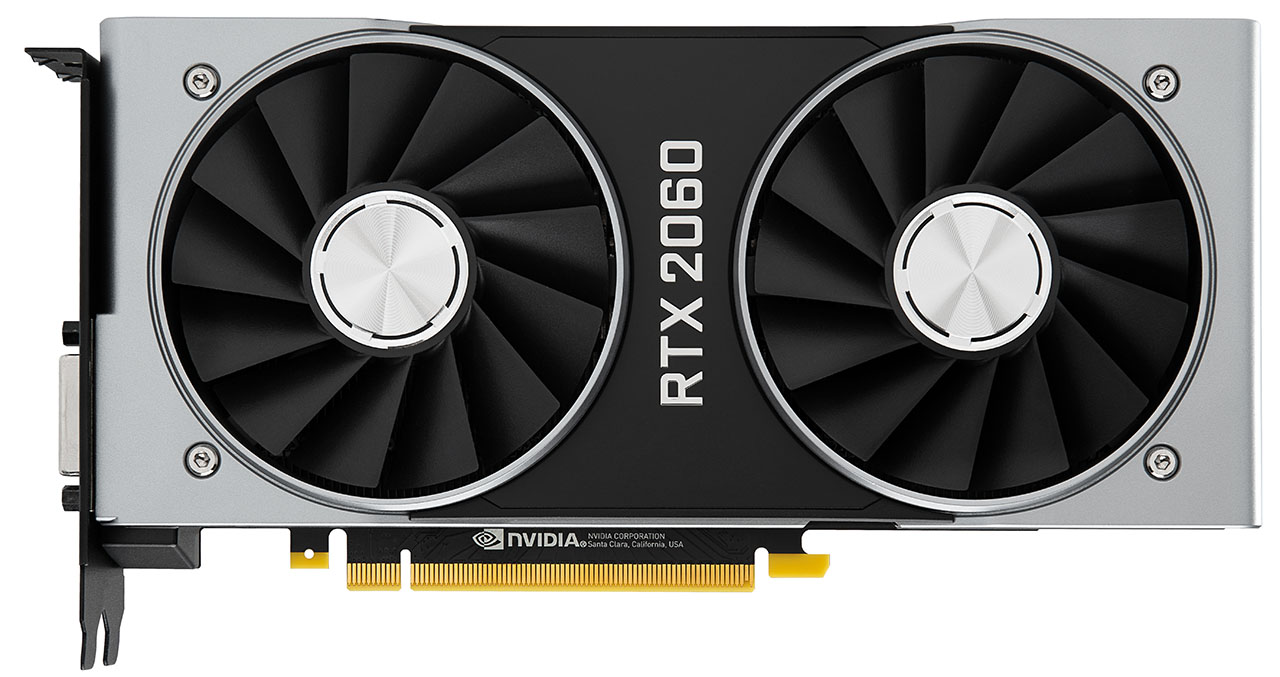Nvidia GeForce RTX 2060 Review: Is Mainstream Ray Tracing For Real?
Why you can trust Tom's Hardware
Conclusion
Up top—where RTX 2080 Ti, 2080, and even 2070 live—Nvidia is the only name in town. Its prices reflect this. If you want to play up in that league, you have no choice but to pay the company’s 'luxury tax.
RTX 2060 lands in more hotly contested territory, though. AMD’s Radeon RX Vega 56 can conceivably compete with a lower price, while Radeon RX Vega 64 demonstrates similar performance. Plenty of GeForce GTX 1070 and 1070 Ti cards vie for attention too.
In short, it’s not enough for GeForce RTX 2060 to replace a Pascal-based card at the same price, add RT cores and tell enthusiasts that the games are coming soon. No, GeForce RTX 2060 needs to be faster and cheaper than the competition in order to turn heads.
A price tag of $350/£330 puts GeForce RTX 2060 in the same territory as GeForce GTX 1070. It’s less expensive than AMD’s Vega 56 and Nvidia’s 1070 Ti. Yet, it beats both cards more often than not. The geometric mean of RTX 2060’s average frame rate across our benchmark suite at 2560x1440 is 77.9 FPS. Apply the same calculation to GTX 1070 Ti and you get 76.2 FPS. RX Vega 64 achieves 77.8 FPS. RX Vega 56 sits at 69.8 FPS. GTX 1070 lands just under that, at 67.2 FPS.
Nvidia’s biggest sin is probably calling this card a GeForce RTX 2060. The GeForce GTX 1060 6GB launched at $250. GeForce GTX 960 started at $200. GeForce GTX 760 debuted at $250. Now, the company is pushing its xx60 series all the way up to $350. The performance we measured certainly justifies such a price. But it probably could have been called a 2060 Ti or the 2070 and made fewer waves.
The other interesting take-away from the launch is that Nvidia’s hybrid rasterization/ray tracing approach is still viable down at the 2060’s price point. As far back as our first deep-dive into the Turing architecture, we wondered how useful 36 RT cores would be on TU106 compared to TU102’s 68 RT cores. Now, we have a derivative GPU with just 30 RT cores, and it’s capable of over 60 FPS at 1920x1080 with all options, including DXR Reflection Quality, set to Ultra in Battlefield V. No doubt, that’s a testament to EA DICE and its optimization efforts, which continue in the form of an upcoming patch to enable DLSS support.
Still, we don’t draw conclusions based on what might happen down the road. Fortunately for Nvidia, RTX 2060 is generally faster than much more expensive cards in today’s games. Its 160W TDP does correspond to that higher performance. But it’s also still significantly more efficient than AMD’s Vega 56. We’re relatively confident that RTX 2060 Founders Edition, specifically, will see limited availability on geforce.com. Once it’s gone, Nvidia’s board partners need to keep prices close to the $350/£330 benchmark or else risk being undercut by very real competition from AMD and Nvidia’s previous generation.
Get Tom's Hardware's best news and in-depth reviews, straight to your inbox.
MORE: Best Graphics Cards
MORE: Desktop GPU Performance Hierarchy Table
MORE: All Graphics Content

